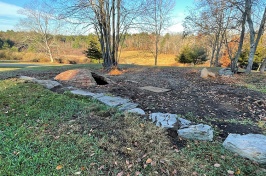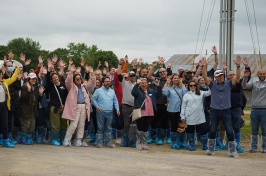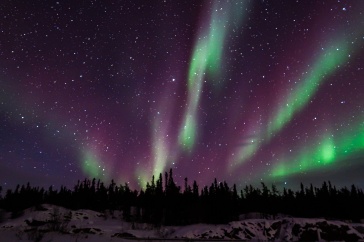
Call them the fortunetellers of climate change: Climate models, which draw on the physics and chemistry of the Earth and its oceans and atmosphere, are at the heart of understanding our changing world. Just as the morning’s weather report helps us decide whether to wear gloves, play golf or harvest crops on a given day or week, climate models let us anticipate and prepare for global climate trends decades or even a century away.
At UNH, an interdisciplinary team of climate modelers is working to scale down sophisticated global climate models that, for all their computational firepower and big-picture projections, fail to deliver significant insight into what we care most about: How is the climate in my state, my town, my backyard changing, and what will it mean for me? Will my kids go skiing in December and trap lobsters in June? Will my grandkids tap sugar maples for syrup?
“When you start getting down to finer scales or looking at more detailed problems, that's where these big models are not useful by themselves,” says modeler and Earth sciences professor Matt Huber of the Climate Dynamics Prediction Lab at UNH’s Institute for the Study of Earth, Oceans, and Space (EOS). While a global climate model might indicate a future decline in deciduous trees, for instance, the UNH models show there will be fewer maples in New England.
“When you start getting down to finer scales or looking at more detailed problems, that's where these big models are not useful by themselves.”
As part of the National Science Foundation-funded Experimental Program to Stimulate Competitive Research (EPSCoR), Huber and colleagues have been zooming in on these global models to bring future climate scenarios in the northeast U.S. into much sharper focus. The groundbreaking work aims to obtain climate variables such as temperature and precipitation — calculating some measures even down to the hour — 100 years out.
EOS research scientist Muge Komurcu, a key researcher leading this effort, is working on high-resolution simulations of the future climate in New England. She’s able to model many processes in detail and project the intensity, frequency and duration of precipitation, as well as extreme events such as droughts, floods and heat waves at a regional level.
For instance, the team’s results indicate that without serious carbon mitigation efforts, by 2100 temperatures of a typical summer month in the Northeast will be the same as heat wave temperatures during the past few decades. “So pick the hottest, muggiest, nastiest three-day heat wave you’ve felt and that is all of July, if we don’t work hard to avoid massive global warming,” Huber says.
Is nitrogen the new carbon?

It fertilizes crops that feed the world, but reactive nitrogen is also a pollutant that contributes to a cascade of environmental and human health problems such as smog, coastal “dead zones” and climate change. And while reactive nitrogen occurs naturally, human creation of it has increased sixfold since 1940. To understand how our consumption of food and energy releases nitrogen into the environment, Alley Leach, a Ph.D. student in the natural resources and Earth systems science program, is applying a nitrogen “footprint” model she developed while at the University of Virginia to calculate UNH’s institution-wide nitrogen impact. Part of the first cohort of universities using this tool, UNH is also integrating the nitrogen footprint into the Campus Carbon Calculator, a tool developed by the UNH Sustainability Institute and used by thousands of institutions around the world. “Most carbon footprint reduction strategies will also reduce the nitrogen footprint, which is a win-win for sustainability,” says Leach, who studies with University Professor John Aber.
While Komurcu focuses on modeling how clouds — what Huber calls the “heavy lifters” of the climate system and one of the biggest mysteries in climate modeling — influence climate by either absorbing or reflecting sunlight, her colleagues’ work is down to Earth. The EPSCoR project has brought together two UNH-built ecosystem models, one land-based and one aquatic, to produce much more robust and meaningful results for the very first time. By synchronizing interdisciplinary moving parts, the models are able to talk to each other and churn out results that matter, providing never-before-available insights into more than 100 data variables that affect everything from how crops will grow to the length of the future ski seasons.
“Aquatic systems and terrestrial systems — rivers, lakes and forests — are very closely linked and forests really influence streams and therefore influence water quality all the way downstream,” says Wil Wollheim, assistant professor in the department of natural resources and the environment and co-director of the Water Systems Analysis Group at EOS. “Combining models now lets us understand how things change on land and at the same time, and very consistently, how things change in water, which is especially important when land use and climate are changing.”
Wollheim’s group developed the Framework for Aquatic Modeling of the Earth System (FrAMES), a hydrological and biogeochemical modeling system that can be used to model concentrations of nutrients like nitrogen, phosphorus or dissolved oxygen in water as they travel from small streams in the mountains through aquatic systems to the coastal zone. The EPSCoR work ensures FrAMES interacts with another UNH-developed model, the Forest Carbon Water Balance Model (PnET). Created by University Professor John Aber and now led by professor of ecosystem ecology Scott Ollinger, PnET (a mashup of the scientific abbreviations for net photosynthesis — Pn — and evapotranspiration, or ET) forecasts what forests will do under different climatic conditions and environmental stressors such as insect infestation or pollution and how they will continue to sequester carbon or not.
For instance, early findings indicate that if carbon dioxide emissions continue at the current rate, we’ll see major changes in ecosystem services — the many ways ecosystems provide benefits like clean water for drinking or wood for fuel or construction — by 2040. And land-use change will exacerbate impacts of climate change. “The forests of New Hampshire are important for buffering changes in climate and maintaining ecosystem services,” says Wollheim.
This modeling work, under the framework of an EPSCoR project called Ecosystems and Society, ultimately aims to link future climate scenarios with current decisions about how we use our natural resources and emit carbon, connecting the highly technical computational work of scientists to our daily lives. It’s essential, the researchers say, to bring their work to bear on real-world solutions to a changing climate.
“The science I do has transitioned from being more or less irrelevant to modern society to something we very much need to understand and translate into things that people can actually use, things that can help inform improved building codes or better decisions about stormwater management, for example,” says Huber. “Which is where things start to get really interesting.”
David Sims contributed to this story.
-
Written By:
Beth Potier | UNH Marketing | beth.potier@unh.edu | 2-1566



















































